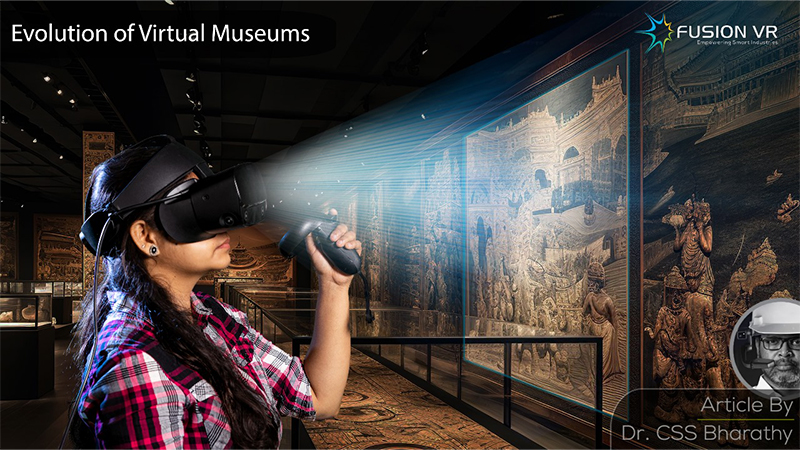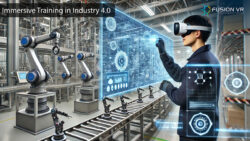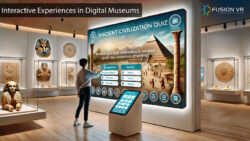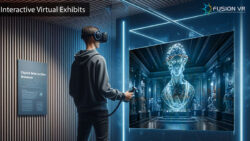Museums have long served as institutions that have preserved valuable artifacts of human history, culture, and knowledge. They are helping to present the past for the benefit of the present and future generations. This is the role that traditional museums have been doing for centuries. With the growth of digital technologies, there are new and highly effective approaches for experiencing and preserving the cultural, scientific, and even corporate heritage of a country.
The growth of digital technologies has democratized access to information and experiences to a large swathe of people who did not have this access before. Virtual museums are definitely one of the best innovations to come out of the emergence of digital technologies. The accessibility it has created is truly amazing and paves the way for creating wonderful opportunities for the global good.
Virtual museums as a concept had its emergence in the 1990s when the growth of computing and communications technologies exploded across the world. The internet brought with it email, browsing, and a wonderful way to access information from the comfort of your own home. The digitization of images and their sharing on the World Wide Web was just the beginning of a virtual museum experience. In fact, the Louvre, one of the world’s most visited museums launched its own website in the year 1993. This is quite a historical moment in the timeline of the evolution of digital museums when a traditional museum first demonstrated its digital outreach to the global audience.
With the leaps in digital technologies achieved, so did the use of such technologies in the growth of virtual museums. The last two decades have been witness to the proliferation of digital museums. This has been driven by the leading museums to make their collections accessible to as many people as possible. Digital technology has leveled access to museum collections worldwide. We have witnessed a generation that is not constrained by age, race, sex, location, or affordability to enjoy access to the most wonderful natural and human creations to date. Apart from the Louvre, the famous British Museum in 2007 launched its online collection. This enabled users to explore its vast trove of artifacts and artwork from their computers. Google launched its Arts and Culture platform, by partnering with various museums and cultural institutions. This has been a leading effort to date as it acts as a global gateway for users to experience virtual museums. The scope and breadth of this portal have grown and I highly recommend it to everyone to experience and enjoy the wonderful world of culture, virtually. Check out the Smithsonian 3D Digitization project. This effort started in 2010 and has created models of various items that are found in traditional museums. These digitized 3D artifacts allow you to explore, experience, and enrich yourself. At some level, it’s better than a physical visit to the museum as the virtual museum experience enables you to experience in much greater detail and much longer duration. These kinds of initiatives led by world-famous museums and technology giants have been responsible for the wonderful world of virtual museums we have now.
The evolution of virtual museums started with featuring two-dimensional images coupled with textual information that described the origin and key details of the artifact or painting. This was great at the time because museum enthusiasts could actually know what was in the museum. It generated interest and encouraged them to visit the museum. The 2D images however lacked the immersive 3D experience that a personal visit to the museum provided.
Virtual Reality and Augmented Reality have emerged as the key technologies in museums to deliver engaging, interactive, and immersive experiences in museums, both in person and virtually. Users would only need a good quality VR headset and a tablet or an AR wearable for the AR experience. The cost of a VR headset has come down considerably, museums can have it in sufficient numbers and the smartphone is almost ubiquitous. The VR museum experience is now available at many museums, both in traditional and virtual museums.
VR has enabled 360-degree virtual tours that allow the visitor to replicate a personal visit to the museum. Using a VR headset makes the virtual experience indistinguishable from a real visit to the museum gallery. Exhibits and experiences are constantly being developed for all visitors to enjoy and educate themselves. The Metaverse promises the take this to a wholly new level where visitors can travel between virtual spaces and host virtual tours and exhibitions in virtual museums. Virtual museums have initiated efforts to include voice descriptions, various language options, text-to-speech functionality, etc. to make virtual museums more inclusive and cater their offerings to a more diverse museum audience, both locally and globally.
India is not behind any nation in the field of virtual museums. The interest it is gaining in recent years is amazing. Virtual museums in India have embarked on digitizing the various historic artifacts, manuscripts, art forms, archaeological treasures, etc. at institutions such as the National Museum in New Delhi and the National Archives of India. They have now made available part of their collections online. The Archaeology Department in the state of Tamil Nadu has also launched a virtual museum initiative that presents the archaeological treasures of the state. Fusion VR provided VR and AR museum experiences many years ago at the RKM museums across the country. The Amma Museum in Chennai is another example of how VR and AR have been deployed to showcase the times and achievements of important leaders. The landscape to develop virtual and augmented reality museum experiences is huge in India. The country is blessed with a rich artistic, musical, and cultural heritage that needs to be made accessible to all sections of the country. The various languages have delivered amazing diversity and some communication challenges that can be overcome through the use of virtual museums. It is quite obvious that the economic growth and spending power of people is leading them to seek newer and better experiences. VR and AR developers and museum enthusiasts could very well capitalize on these trends and developments to maximize their contributions to the virtual museum scene in India
Today, the virtual museums occupy an important place in the global and national cultural scene. The pandemic has helped drive the necessity of creating and curating virtual experiences in every conceivable area of human activity. These virtual offerings are helping organizations survive during difficult times and have become more practical and relevant.
There is a noticeable surge in virtual museum visitors, with various institutions across the world investing in upgrading as well as innovating their offerings to digital experiences.
The virtual museum movement has maximized the level of visitor engagement. The focus and quality of engagement are vastly improved and quite different from traditional museums. Virtual museums offer visitors the ability to transfer their experiences to their social media through selfies, and game results. This helps to share these experiences with their family, and friends and influence their social media following immensely. The physical engagement seen in traditional museums with tours, talks, and games does not engage every visitor due to a paucity of personnel and space. In the virtual museum, these constraints are removed as the interaction with the museum collections and exhibits is on one, interactive and immersive as well. These museums are also being curated in the same way as traditional museums with a high level of care and scholarship. Their expertise delivers high-quality multimedia, imagery, and textual content for a wholesome visitor experience. Museums are increasingly partnering with technology companies and service providers to keep up with the technology trends and how they can innovate visitor engagement and experiences.
The future of Virtual Museums is exciting and promising considering how rapidly they have co-opted technology into traditional museums. We will see increasing uses of AR and VR in the creation of experiences that allow immersive experiences that enable visitors to walk back into the past and explore key historical events, explore ancient civilizations, conflicts, and expeditions. Artificial Intelligence and Machine Learning will be used increasingly to offer highly sophisticated and personalized experiences in both virtual and traditional museums. The data obtained from visitor experiences will be used to develop and curate more engaging and meaningful individual experiences for museum visitors.
The Metaverse will transform the virtual museum experience in the coming years and virtual experiences and transactions will be using blockchain technology to verify the origin and authenticity of artifacts and eliminate counterfeit stuff. NFT-based artwork will be finding a prominent place in upcoming virtual museums. This extent of digitalization will bring the world museum community closer and minimize the challenges and constraints of physical borders and distances.
The virtual interactive museums and VR experience centers continue to receive great support from the government and private entities today and this is likely to increase in the future. Fusion VR is excited about the development of virtual museums and corporate experience centers in India and across the world.





